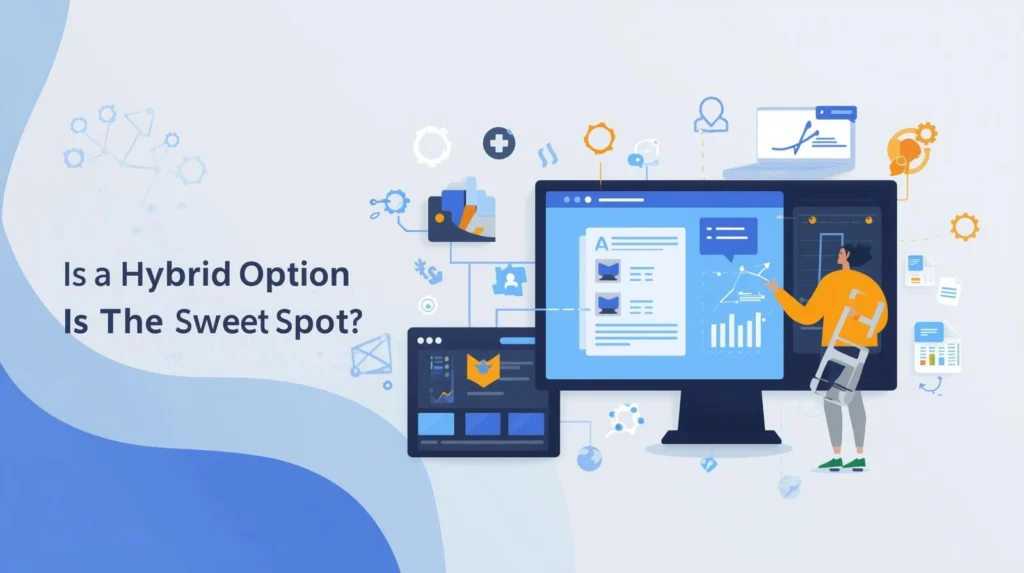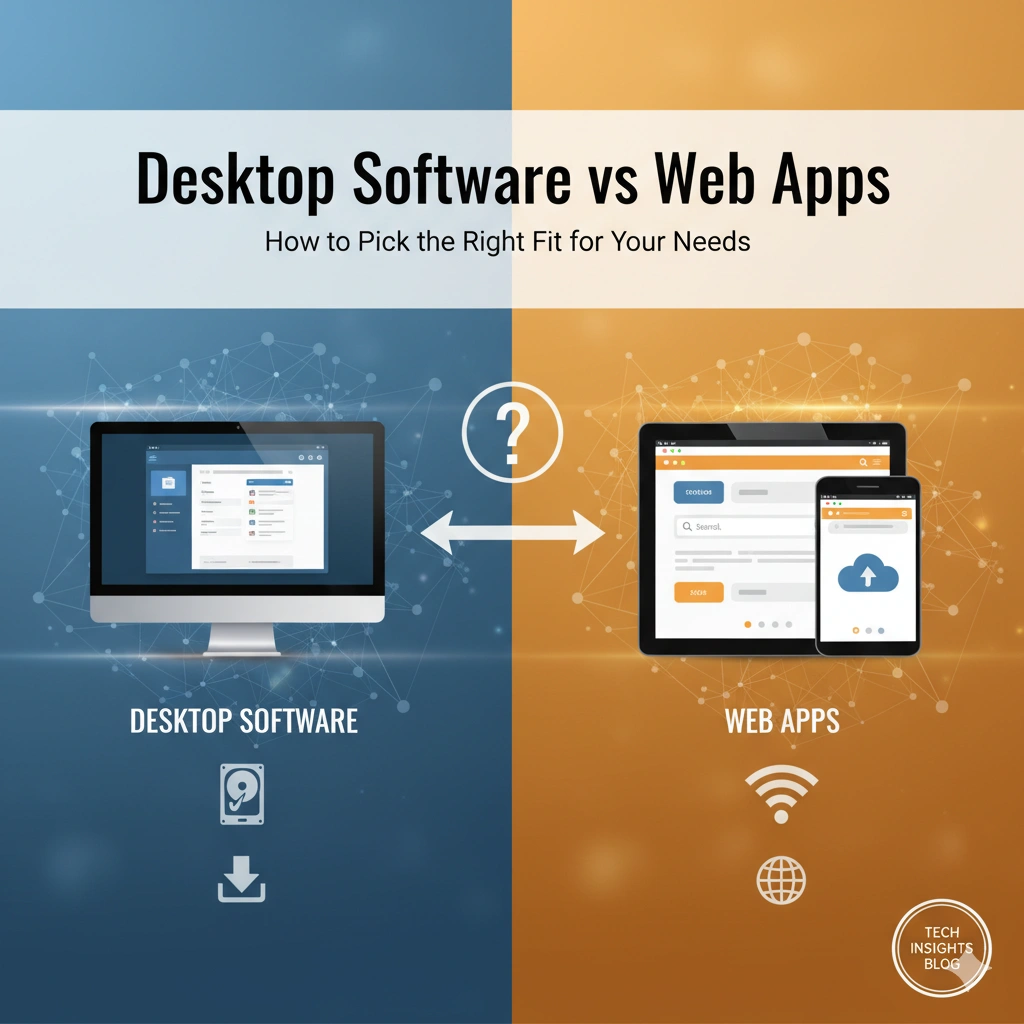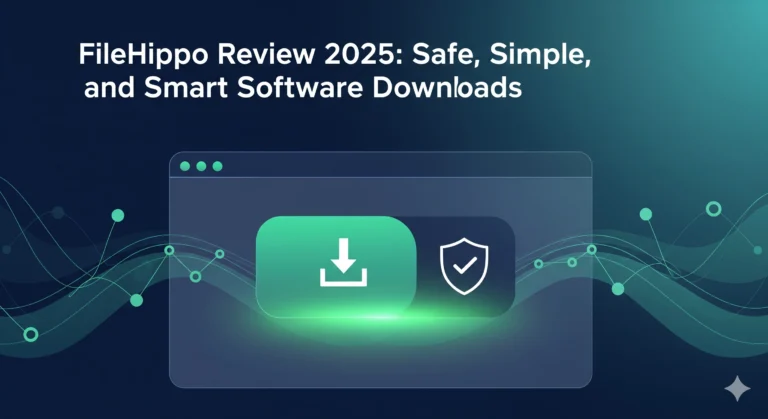Desktop Software vs Web Apps: How to Pick the Right Fit for Your Needs
When you’re planning a new project or choosing tools for your team, one question always comes up: Should you go with desktop software or web apps?
At first glance, it feels like a simple either/or decision. But the truth is, neither option is universally “better.” The smarter way to look at it is this: Which one makes the most sense for your goals, users, and day-to-day workflow?
Let’s break it down together.
What Makes Desktop Software Different?
Desktop software is what most people think of as “traditional programs.” You install them directly on your computer, and they usually run without needing the internet. They’re built for specific operating systems like Windows, macOS, or Linux.
Common examples you probably know:
- Adobe Photoshop
- AutoCAD
- Microsoft Excel
- VLC Media Player
Where desktop apps shine:
- Power and speed: Perfect for demanding tasks like video editing, 3D design, or heavy data crunching.
- Offline access: No internet? No problem. The app works anywhere, anytime.
- Deep system integration: They can interact more closely with your device, like using hardware acceleration or accessing system files.
- Local data storage: Sensitive data can be kept on your machine instead of the cloud.
Drawbacks to keep in mind:
You’ll need to install (and sometimes manually update) the app, and it usually only works on the operating system it was designed for. Plus, collaboration is trickier unless the software has built-in sync features.
What About Web Apps?
Web apps live in your browser. You don’t download or install them — you just log in and start using them. All you need is an internet connection.
Examples you probably use daily:
- Google Docs
- Trello
- Canva
- Salesforce
Why people love web apps:
- Access anywhere: Laptop, tablet, or phone — if it has a browser, you’re good to go.
- Automatic updates: No downloads, no patches. You’re always on the latest version.
- Team-friendly: Real-time collaboration makes teamwork seamless.
- Cross-platform: Works across Windows, Mac, Linux, iOS, and Android.
- Lower upfront cost: Great for startups or MVPs that need to move fast.
But here’s the catch:
They rely heavily on internet speed and may not handle resource-heavy tasks as smoothly as desktop apps. System-level features (like connecting to hardware) can also be limited, though modern APIs are closing that gap.
Desktop Software vs Web Apps: A Side-by-Side Snapshot
| Feature | Desktop Software | Web Apps |
|---|---|---|
| Performance | Uses full device power, great for heavy tasks | Slower for complex processing |
| Accessibility | Limited to installed devices | Accessible anywhere with a browser |
| Offline Use | Fully available offline | Needs internet (with some offline modes in modern apps) |
| Collaboration | Limited unless synced | Built for real-time teamwork |
| Updates | Manual installs or downloads | Instant updates via the cloud |
| System Integration | Deep OS-level access | Limited but improving |
| Security | Local storage, depends on user safeguards | Cloud storage, depends on provider |
Is a Hybrid Option the Sweet Spot?

Sometimes, the best choice isn’t one or the other — it’s a bit of both.
Tools like Slack, Visual Studio Code, or modern Progressive Web Apps (PWAs) blur the line between desktop and web. They can:
- Work offline
- Sync and update like a web app
- Run across platforms
- Still feel “native” on your device
If your audience needs flexibility — some online, some offline, some high-performance tasks — a hybrid approach could be the best of both worlds.
Conclusion
There’s no universal winner in the desktop software vs web apps debate.
If you need power, offline access, and system integration, go desktop.
If you want flexibility, collaboration, and easy updates, web apps are your friend.
And if your needs fall somewhere in between? Explore hybrid options.
At the end of the day, the “right” choice isn’t about trends — it’s about what helps you (or your users) get the job done most effectively.
FAQs
Q1. What is the main difference between desktop software and web apps?
Desktop software is installed on your device and works offline, while web apps run in a browser and need internet access.
Q2. Which is better: desktop apps or web apps?
It depends. Desktop apps are best for heavy tasks and offline use, while web apps excel in accessibility and real-time collaboration.
Q3. Are web apps faster than desktop software?
No. Desktop apps usually run faster because they use your device’s full hardware, while web apps rely on internet speed.
Q4. Can web apps work offline?
Some modern web apps (like Progressive Web Apps) offer offline features, but most still require a stable internet connection.
Q5. What’s a hybrid app?
A hybrid app combines both worlds — it works like desktop software but updates and syncs through the web, offering flexibility and performance.







